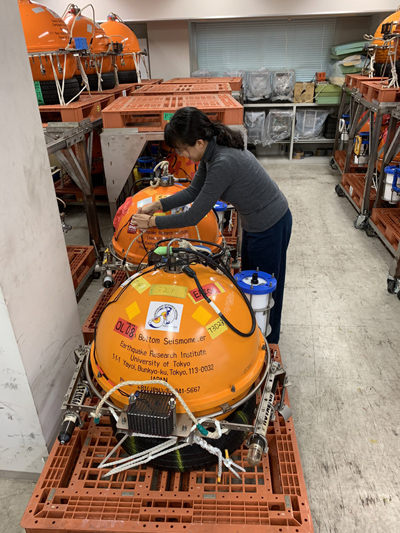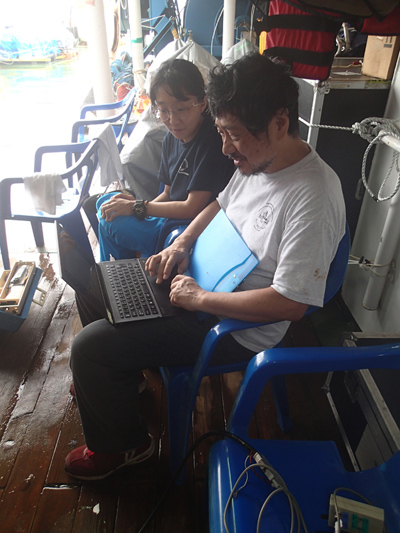13 February 2024–Oceans cover about 70% of the Earth’s surface—a fact that draws HyeJeong Kim’s scientific gaze under the sea, even as the seismologist now works on dry land as a postdoc at the University of Utah.
“If you don’t have seismic stations under that massive water, it’s limiting our understanding for 70% of the surface of the planet we are living on,” said Kim, explaining her love of ocean bottom seismometers (OBS).
Conducting seismology research with OBS in the depths comes with unique challenges, she said, including a shorter length of time for data collection, difficulties in fixing equipment when technical issues arise and understanding how the unique environment affects seismic wave detection and analysis.

“Ocean bottom seismometers are a challenge we have to continue to figure out,” said Kim. “As a graduate student, I thought that was really nice, participating in a science that needs significant development.”
Kim became interested in plate tectonics after reading a series of science books as a child, and in high school she found a book on planetary seismology. “I borrowed that book for months to understand everything in it, so maybe it was a destiny-type thing,” she recalled. “I was also into math and physics, and geophysics combined all three things I was interested in.”
Kim’s high school’s program in South Korea focused more on meteorology than geology, however. “I was very into those numerical schemes of atmospheric modeling, and I actually applied to university saying I wanted to develop a new numerical model,” she said.
Eager to study abroad, Kim did an undergraduate internship at the Earthquake Research Institute at The University of Tokyo and was encouraged to return for graduate school. At the university, Kim participated in several OBS deployments in the Pacific Ocean and began studying how the thin layer of sediment on the ocean floor affects seismic wave propagation and analysis.
Less than a kilometer thick in most places, the sediment thickness varies for various reasons, interfering with the data that OBS collect. The waterlogged sediment behaves more like mud than rock, and seismic waves pass through it at low velocities, which amplifies the body waves that OBS collect —another effect that Kim studied as she looked for ways to better understand OBS data.
She has studied OBS data from deployments she has participated in as well as reanalyzing older OBS records. “I wanted to study sediment effects that were not discussed before and effects that could be important when doing a wide range of body wave and surface wave analyses,” she said. “All of the data that we collect is affected by that thin layer. This shallower layer research can lead us to more reliable models in the deeper depths.”

Kim is also fascinated by how OBS are designed, built and operated, after her experience with them at sea. Deploying and retrieving OBS requires a mix of cutting-edge technology and sensors and more old-fashioned fieldwork. Once a signal is sent calling the OBS to the surface, the researchers must manually scan the horizon with binoculars to find their target before retrieving it with heavy duty fishing poles, she said.
After hanging out in the workroom of Hajime Shiobara at the University of Tokyo, Kim also became interested in the details of ultra-deep OBS that can withstand the high-pressure environment of subduction zones, and hopes she can contribute to projects designing new instruments “that will enable us to capture new seismic signals.”
In Utah, Kim now puts her expertise to use in the much thicker landlocked sediments of the Basin and Range. She and others are working to refine the community velocity model of the Salt Lake Valley and other sedimentary basins in Utah, to improve ground shaking evaluations in the wake of the 2020 Magna, Utah earthquake.
She hasn’t come across one big scientific question she would like to devote her career to, but “I want to find some way to do research forever, without starving,” she joked. “I only need three meals a day and a cup of coffee.”
SSA At Work is a monthly column that follows the careers of SSA members. For the full list of issues, head to our At Work page.
